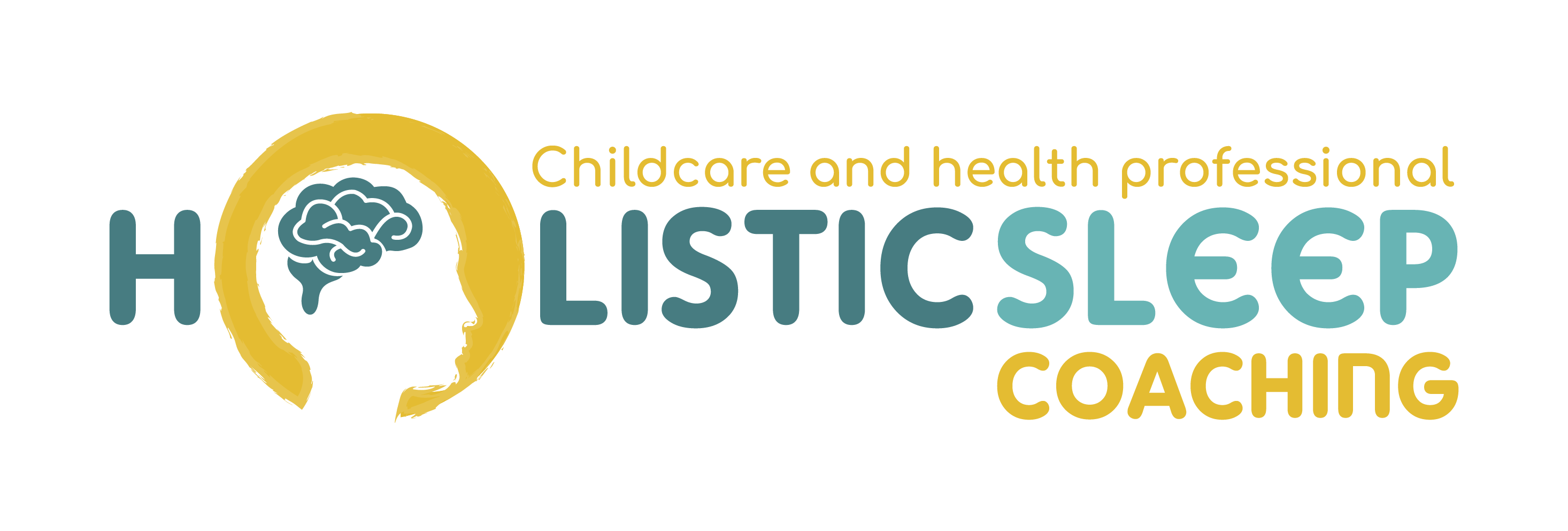Improvements that are responsive, quick, and effective? This is exactly what happens when you have a deep understanding of sleep biology.
If you’re passionate about supporting families towards sustainable sleep without compromising on gentleness, then you are going to love this post.
In this blog, I will share how a thorough grasp of sleep biology can put an end to fragmented, disrupted nights, early mornings, fussy bedtimes, and nap struggles. Stay with us to learn how to transform your sleep coaching practice and make a real difference in the lives of the families you support.
If you prefer watching to reading, click on the video below for a visual overview of how sleep biology principles can revolutionize your sleep coaching practice. Let’s dive in!
Understanding Sleep Biology for Sleep Consultants
Sleep biology isn’t just a buzzword. It’s true that many people talk about it, but they often just scratch the surface or become confused by pieces of pseudoscience masquerading as sleep biological facts.
Unpicking sleep biology is one part of what sleep coaches do. Some sleep problems can be resolved by looking at some of the subtle clues in waking and sleeping patterns. This usually involves no tears at all, and is therefore highly appealing to parents and sleep coaches alike!
There are some sleep biology basics that you’ll want to brush up on and make sure you’re really familiar with, including homeostatic sleep pressure, circadian rhythm, sleep efficiency, and sleep timing.
Understanding Sleep Pressure for Better Sleep Coaching
One of the real game changers for families is understanding sleep pressure. All of us develop increasing pressure to fall asleep as we move through the day, spending time awake. As sleep pressure builds, a chemical called adenosine accumulates, increasing the drive to fall asleep.
Different children have different individual sleep pressures and tired cues. Fundamentally, it’s hard to fall asleep with low sleep pressure, and understanding how children respond to sleep pressure can help families find optimal sleep times for their children.

Some little ones get really bent out of shape when their sleep pressure is super high, and they need help to become calm if they get to this point. In contrast, other little ones will get furious if you attempt to facilitate a nap when their sleep pressure isn’t high enough. All children have different sleep needs and react to sleep pressure differently. Working this out for an individual child is crucial to avoid naptime meltdowns.
There’s a lot of nuance and sometimes some trial and error here, but when you find the sweet spot for little ones, sleep suddenly gets a lot easier for everyone. And while it’s not always obvious, it’s worth persevering with understanding sleep pressure. Manipulating the timings between sleep periods is sometimes the only thing required to improve the overall sleep situation. This is a huge relief for most families as it is a relatively easy and stress-free strategy, can be implemented immediately, and usually leads to immediate results.
Understanding Circadian Rhythms for Better Sleep Coaching
You will also need to understand circadian rhythms. Younger babies of course have an underdeveloped circadian rhythm, but we can influence this by exposing the child to external cues such as light, noise, social cues, and activity levels so that the child gets clear messages about what time of day it is.
This will begin to yield positive effects by about the age of 3 months. Simple ideas include getting outside in broad spectrum daylight as much as possible and also exposing babies to normal activities of daily living.

Also keeping the environment dark, calm, and quiet at night. I don’t mean strict schedules, ignoring children, or avoiding eye contact, I just mean thinking about some of those normal environmental cues in the day and night to optimize their circadian rhythm.
The master body clock controls all other body clocks at the organ and cellular level. Although circadian rhythm is genetically influenced, it is relatively easy to influence circadian rhythmicity for most people. In fact, a recent study found that during the COVID-19 pandemic, many people’s sleep rhythms shifted towards a later phase rhythm, hinting that our body rhythms may be more adaptable than we previously thought.
Understanding Sleep Efficiency for Better Sleep Coaching
You should also think about sleep efficiency. This is the amount of time you spend asleep compared to the amount of time you spend in your bed. The bigger the difference between those numbers, the more inefficient your sleep is – which leads to poor sleep associations. Going to bed should be associated with falling asleep, not lying in the dark feeling frustrated and very much awake. Creating an association between going to bed and experiencing wakefulness and stress can lead to sleep resistance, bedtime refusal, and insomnia.
If you go to bed at 9 pm but you’re not actually asleep until midnight, then you’re experiencing inefficient sleep. Over time, even going into your bedroom can start to raise your stress levels because your body and mind expect you to lie awake frustrated for hours. This is not conducive to rest and relaxation and is a key trigger for sleep onset insomnia. It’s the same for little ones too. You’re looking for a child to take less than 30 minutes to fall asleep from the time you turn the lights out, whether they’re currently being supported to sleep by feeding or parental presence, or whether they fall asleep on their own.
This is something that can often be tightened up by focusing on timings, sleep hygiene, and tackling some of the underlying causes of sleep problems. If bedtime has become a huge battleground with false starts, curtain calls, high levels of drama, or an epic 2-hour negotiation, then consider a much later bedtime which will often stop these behaviors dead in their tracks. This approach, based on cognitive behavior therapy for insomnia, has been shown to be very effective.
Understanding Sleep Timing for Better Sleep Coaching
Then, of course, we need to think about sleep timing. Occasionally, I run into children who are getting enough total daily sleep, but these sleep opportunities are not structured in a way that is helpful for their circadian rhythm.
Overtiredness is a term that’s often bandied around. If you want to dig into why I truly believe this term is overblown and often unnecessary, then check out our earlier post on this topic. It should only ever be considered in the context of a child who really isn’t getting anywhere near enough sleep in 24 hours. So look at the average amount of sleep you’d expect for a child that age, and work it out. Sometimes, it’s just that our expectations are off, and no amount of trying for more daytime sleep or an earlier night will fix a child who simply isn’t sleep-deprived and is already getting enough.
However, sometimes improvements in sleep are only achieved by fine-tuning the timings. A short time awake caused by a small gap between naps or between a nap and bedtime can lead to low sleep pressure and nap or bedtime resistance. A long time awake can lead to high sleep pressure and crankiness. Too much sleep in the day, or in one chunk, can compensate for and reinforce fragmented nights.
A long nap early in the morning can reinforce early rising. Given that most children under the age of 2 can only manage 10-11 hours of overnight sleep (with or without waking to feed), sometimes we need to review the bedtime too.
“Expecting a child to sleep from 7-7 is unrealistic for all except high sleep-need children and will lead to frustration, so-called bedtime battles, split nights, and early rising.”
The nuances with timings are crucial and can be transformative for families.
What sleep biology application to practice looks like
Digging into sleep biology means really understanding individual sleep needs – both on a wider population level and also in terms of the variation in sleep needs and patterns across cultures, ages, and neurotypes.
Circadian rhythms aren’t just about knowing a few facts about melatonin secretion, but the complex interaction between circadian rhythmicity, genetics, sleep pressure, and the impact of daily activities and development on sleep.
Sleep hygiene isn’t just about having a regular bedtime routine and black-out blinds but also considering the wider factors that impact sleep and becoming calm, especially regulation, and how adult caregivers can become more effective co-regulators to facilitate calm, connected, and peaceful bedtimes.
So, today we’ve explored how sleep biology can make a big difference to families, reducing stress and effecting change without compromising responsiveness. We’ve also looked at 4 of the key sleep biology fundamentals – sleep pressure, circadian rhythm, sleep efficiency, and sleep timing, and how these can be optimised to improve sleep naturally.
If you are interested in supporting families in a way that is family-centred, responsive, and evidence-based, then we would love to hear from you. The first step is to book a call with one of us and see if we are a good fit.
Applying Sleep Biology in Practice
Digging into sleep biology means truly understanding individual sleep needs—both on a wider population level and in terms of the variations in sleep needs and patterns across cultures, ages, and neurotypes.
Circadian rhythms aren’t just about knowing a few facts about melatonin secretion but understanding the complex interaction between circadian rhythmicity, genetics, sleep pressure, and the impact of daily activities and development on sleep.
Sleep hygiene isn’t just about having a regular bedtime routine and blackout blinds but also considering the broader factors that impact sleep and becoming calm. It’s about how adult caregivers can become more effective co-regulators to facilitate calm, connected, and peaceful bedtimes.
Today, we’ve explored how sleep biology can make a significant difference to families, reducing stress and effecting change without compromising responsiveness. We’ve also looked at four key sleep biology fundamentals—sleep pressure, circadian rhythm, sleep efficiency, and sleep timing—and how these can be optimized to improve sleep naturally.
If you are interested in supporting families in a way that is family-centered, responsive, and evidence-based, then we would love to hear from you. The first step is to book a call here with one of us and see if we are a good fit.

